England is set to face its ‘soggiest summer’ since 1912. Many would argue that attempting a finicky confection like a macaron in rainy weather is a bit masochistic, which it is. It is not impossible, though. The solution lies in a stable meringue and a few minor changes in the process.
Dry ingredients have to be sifted; unmixed lumps completely ruin the shape of a macaron.
It is then made into a paste with egg whites. If not being used immediately, it is essential to clingfilm it. Exposure to air will dry it out, which is disastrous to the final results (dramatic but true).
The second part of this process is the Italian meringue, which is the most stable kind. Making one involves streaming hot (118C) sugar syrup into whipping egg whites.
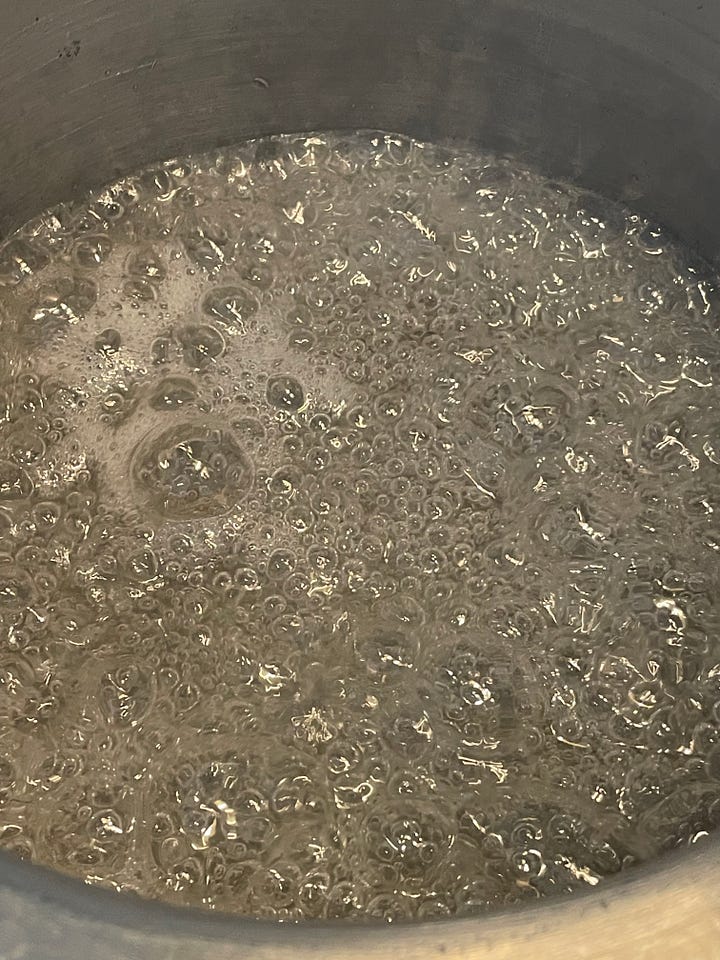
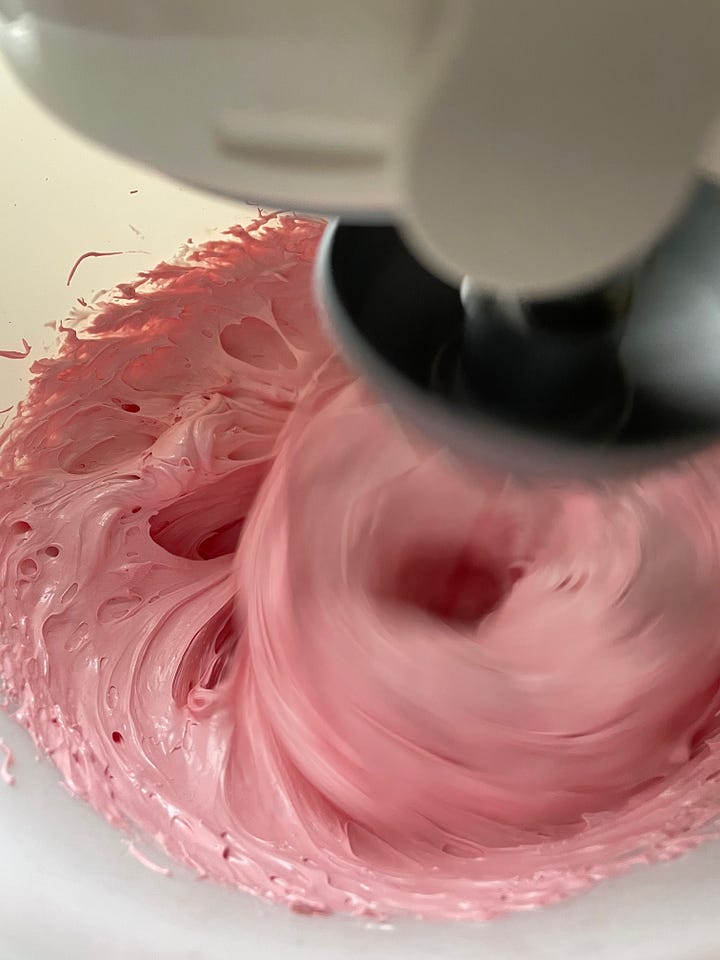
This keeps the balance of air and moisture in check. They are whipped on medium speed till they reach bec d´oiseau consistency, a term I learned in culinary school that has always stuck in my mind. It translates to the beak of the bird, and I’m sure you see why:
An unstable meringue (too much air or moisture) can lead to results like this: a hollow macaron with wrinkly skin. This also occurs when the type of almond flour used is too oily, or the type of colouring used is too liquid. It's not the end of the world, but it deprives you of biting into full, chewy shells.
An essential part of making good macarons is the macaronage itself. This is when the meringue is added to the almond flour paste and folded till it is smooth and flows like lava. The time put into this can be halved by using a stand mixer on the lowest speed instead of the traditional way (by hand). Now that the effort has been made to make a good meringue, it is okay to employ a shortcut.
A Silpat will always be superior to parchment when baking macarons to yield perfectly shaped ones. They are heavy and do not fly around like parchment, warping the piped batter in the oven.
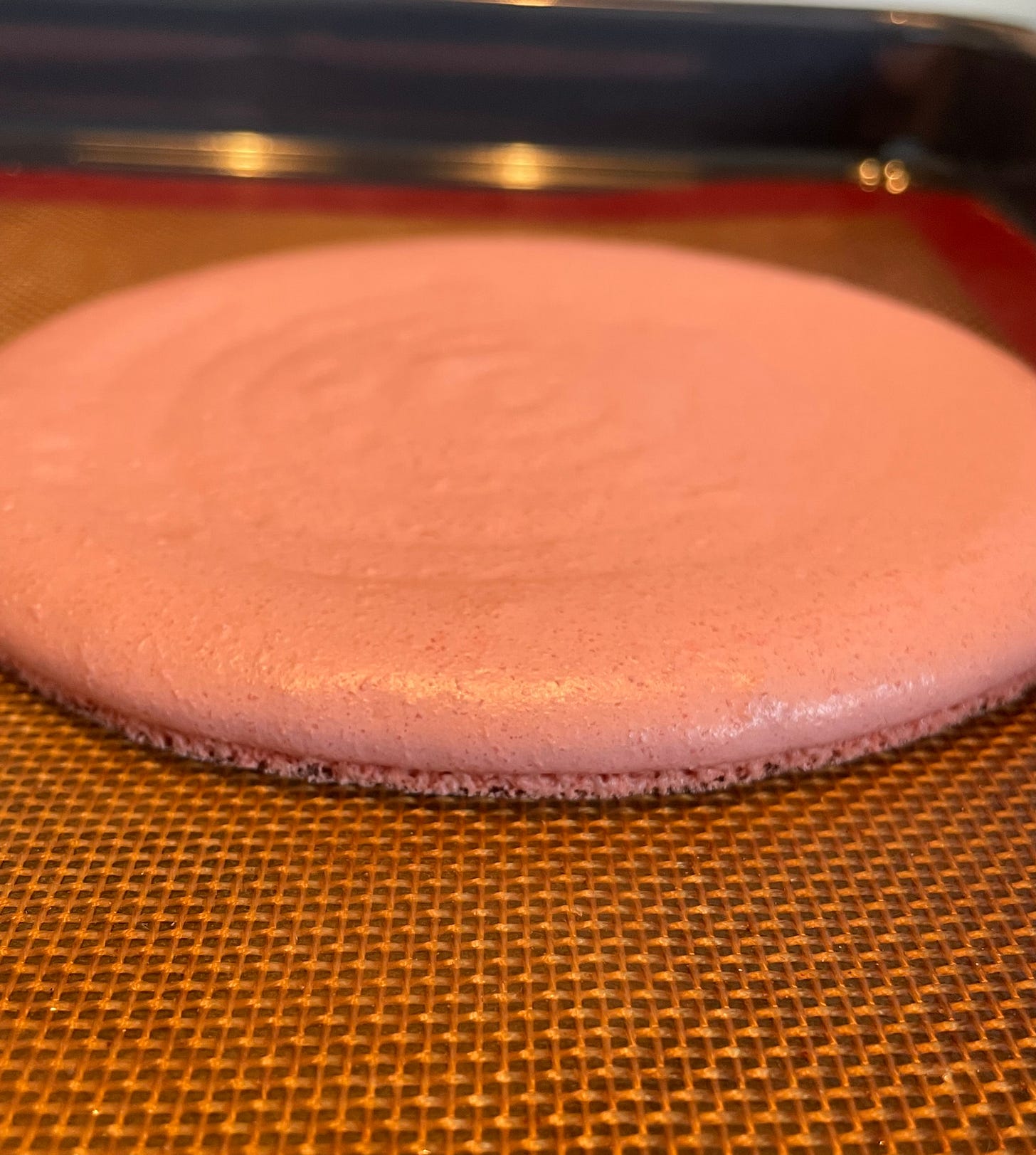
For regular small macarons, cooking all the way through at 135C for 12 minutes works perfectly.
For larger macaron cakes (especially in rainy weather), I preheat the oven to 165C and drop the temperature to 150C for 10 minutes when the macaron is in. Once it has taken shape, the temperature can be dropped further to 130C, allowing it to dry out completely without browning, and releases easily from the Silpat.
The macaron shell itself is unbelievably sweet, but with the right fillings, it takes on a completely different form. Pairing the almond flavour of the batter with a contrasting and/ or congruent-flavoured filling can achieve this.
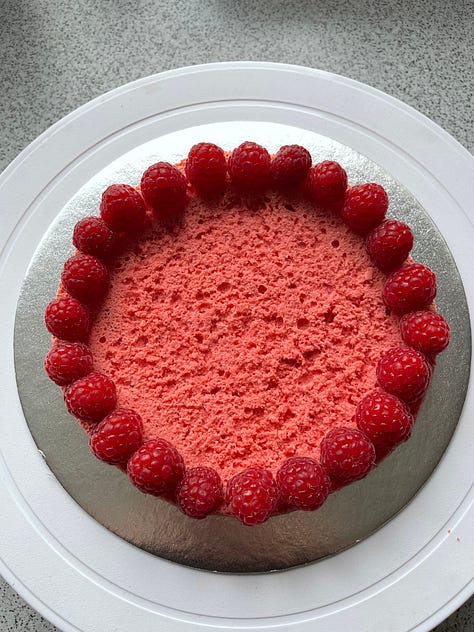
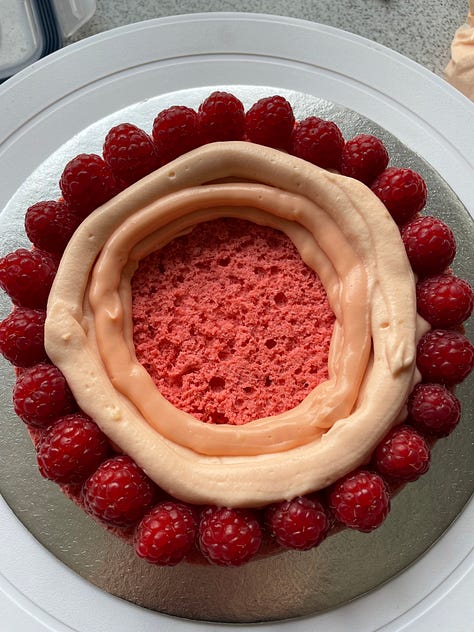
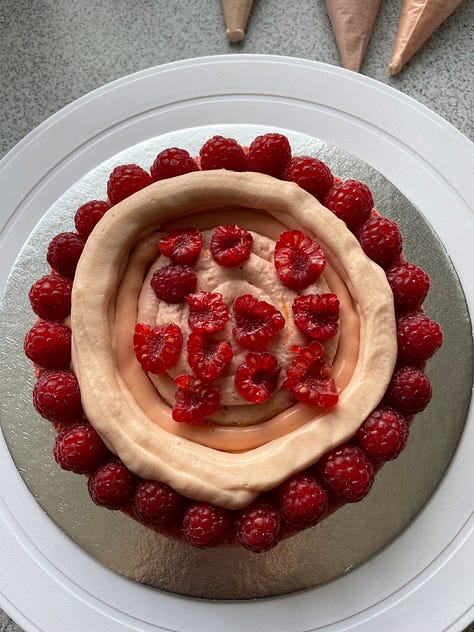
I used:
a light rosewater diplomat (congruent pairing),
a more concentrated rosewater-flavoured pastry cream (congruent pairing),
and an acidic strawberry cremeux (contrasting pairing). The fresh raspberries' acidity also reduced the overall sweetness.
For inspiration and in-depth information about flavour pairings, I often consult The Art and Science of Foodpairing, a beautiful hardcover book often occupying a spot on my coffee table. I really enjoy the logic it brings to a process as creative as building a dessert.
While raspberries would contrast the high sugar content of the macaron due to their high acidity, they have common vegetable, roasted, and caramel notes with almonds. This is what makes them a fantastic pairing. This closely applies to strawberries, which also enjoy common floral notes with fresh rose petals.
Common volatile compounds are often what link great pairings. They are the reason why Disaronno, an almond liqueur, reeks of maraschino cherries despite not containing any, and a wine like Gewurztraminer can simultaneously remind you of rose, lychee, and raspberry.

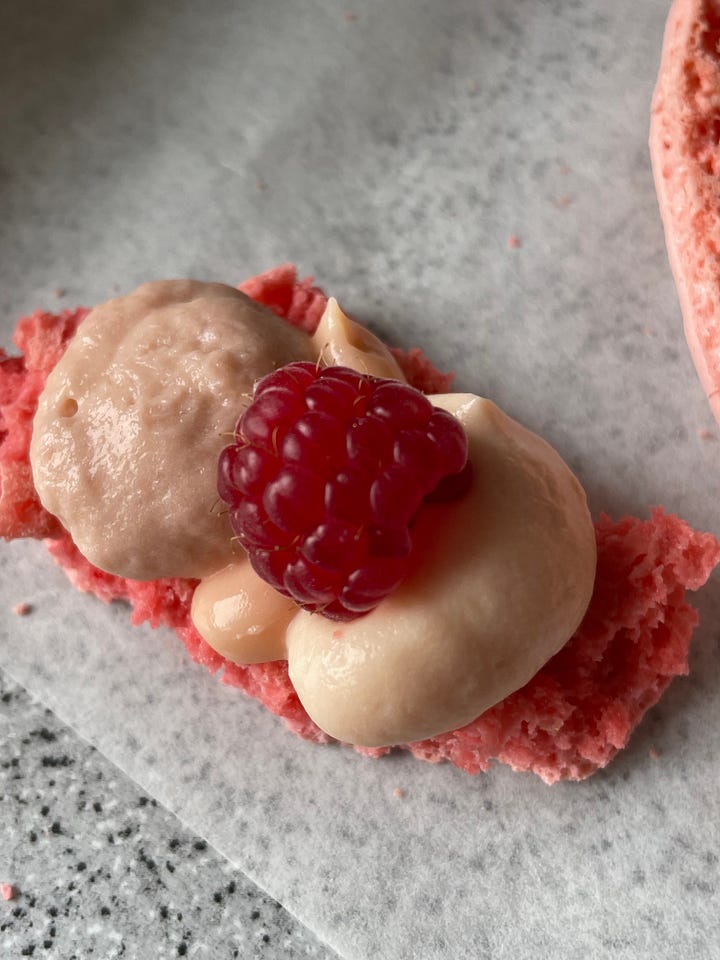
I always try to make a taster for myself, especially when building these larger desserts, to perfect the ratio of elements in them. After tasting, I decided to add more raspberries inside the sandwich because they tied all the flavour notes together beautifully.
And suddenly, I had a complete dessert.

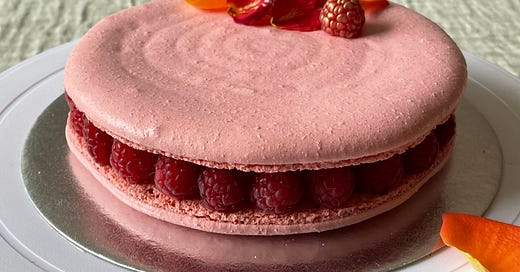



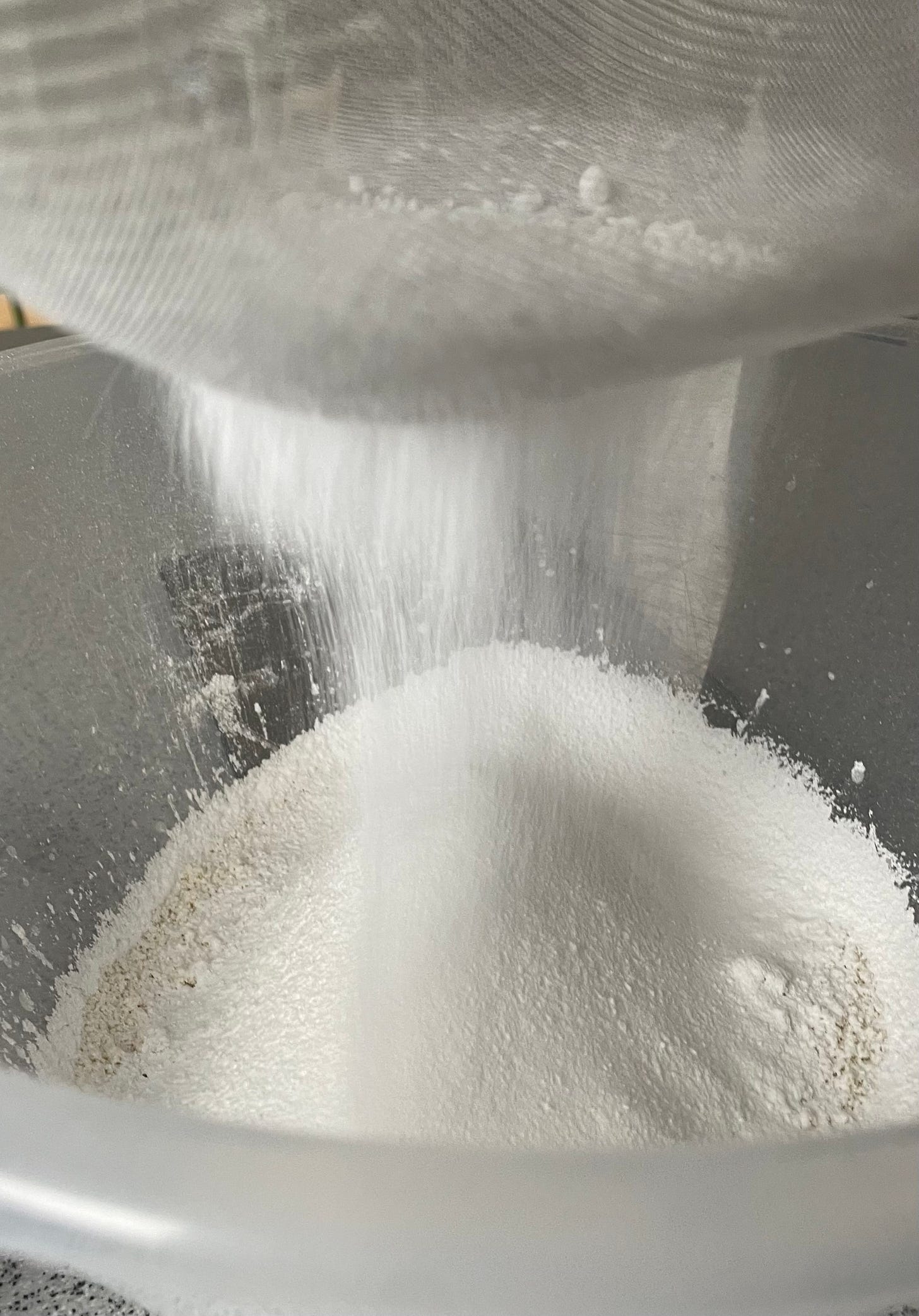

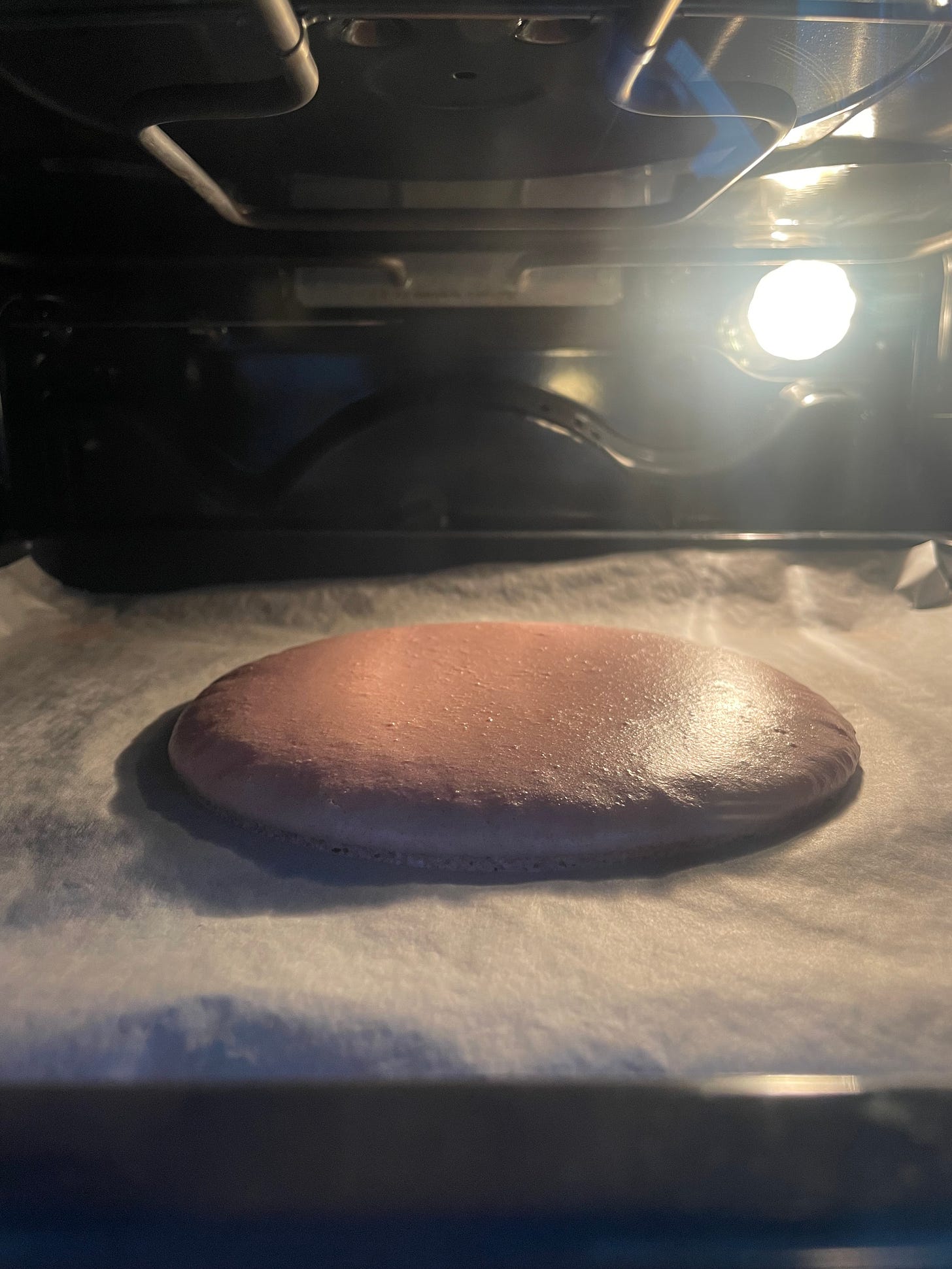


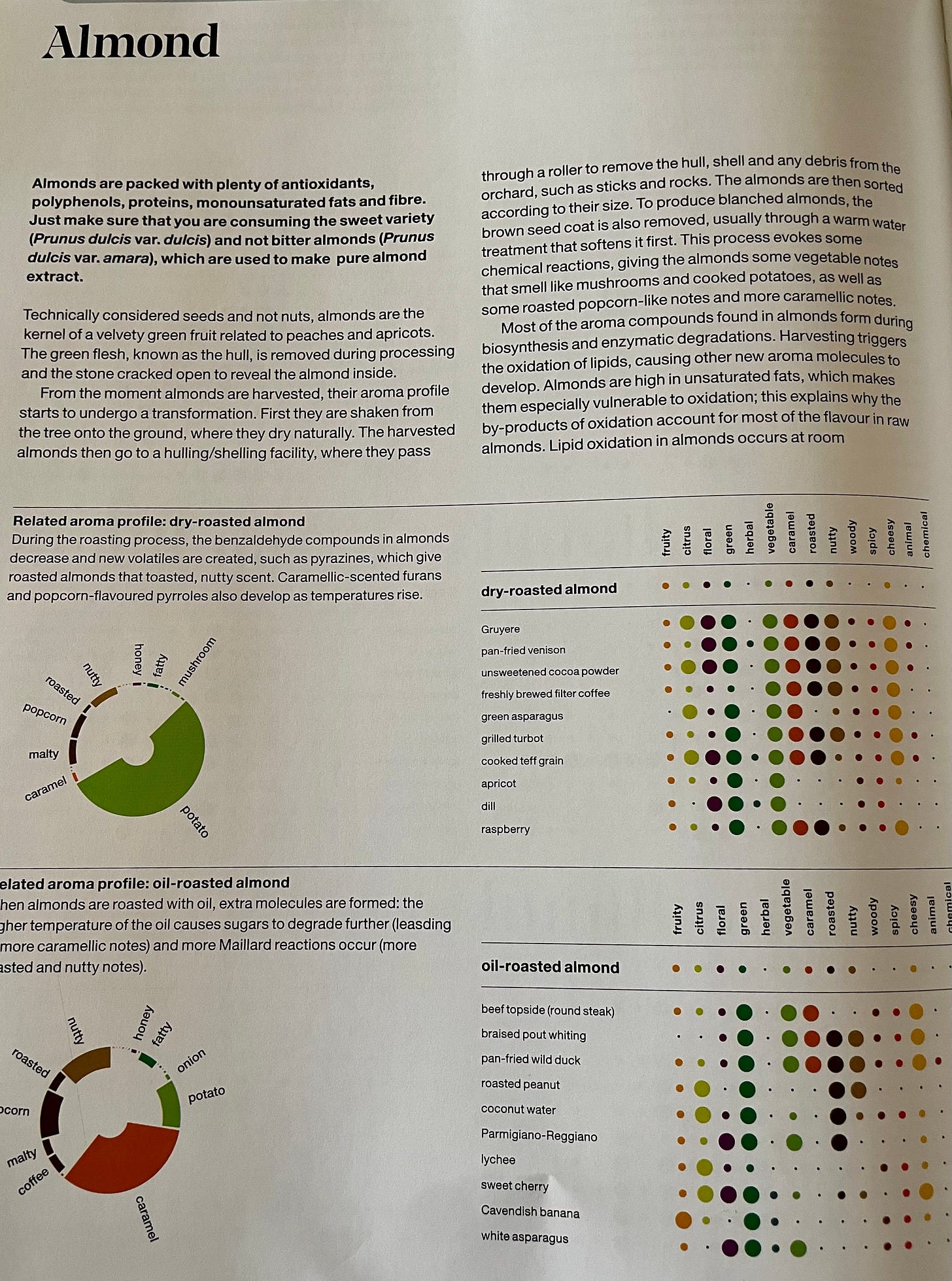
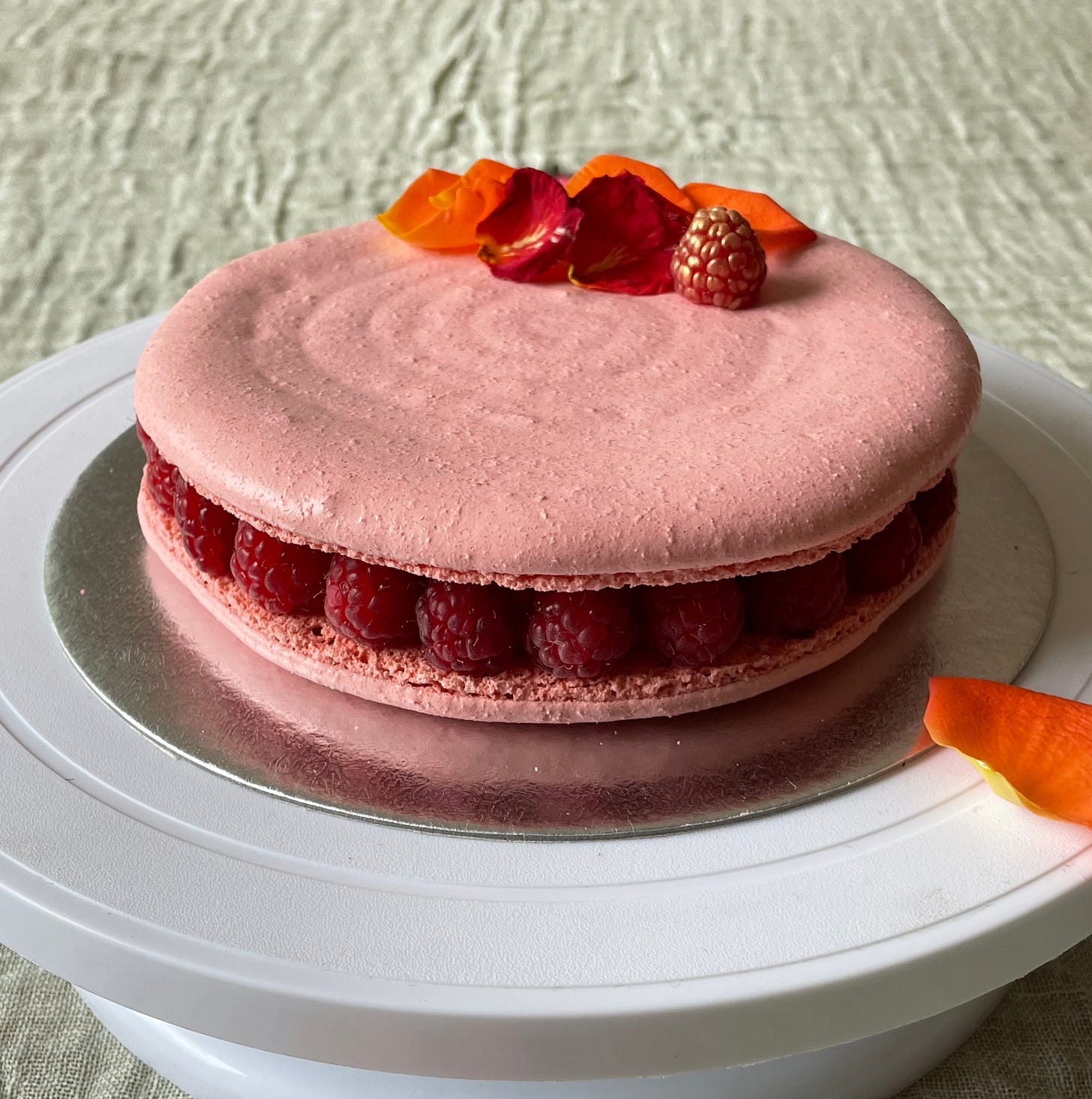
Not to eat or to eat? Too perfect to ruin by cutting, but....
I was told one has to beat the sugar and egg white to stiff peaks. But the French beak of a bird sounds much better. Great tips Sone!